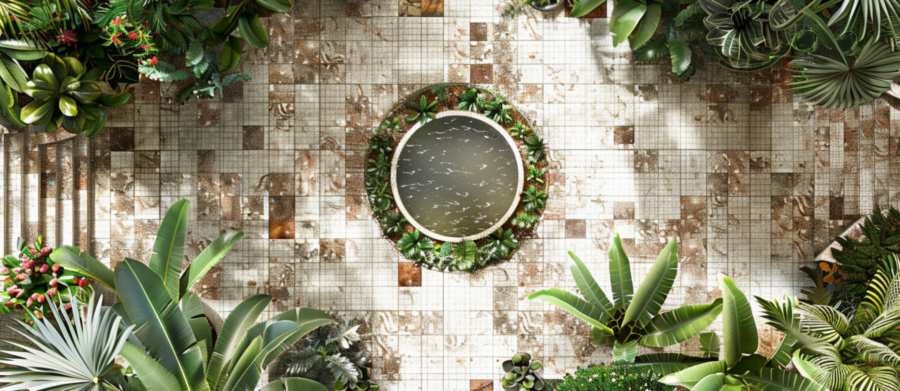Trimming Down the Tool Shed
First, let’s tackle the tool shed. If your garden shed looks like a medieval armory with every tool under the sun, it might be time to downsize. The key to garden minimalism is having just the essentials. Do you really need three different types of rakes? Probably not. Stick to a versatile set of basic tools: a good shovel, a pair of pruning shears, a sturdy rake, and a reliable hose. These are your garden’s equivalent of the little black dress—functional, versatile, and always in style.A well-organized tool shed not only saves space but also saves time. With fewer tools, you’ll spend less time rummaging and more time enjoying your garden. Plus, maintaining a minimal tool collection is easier, reducing the likelihood of rusty, unused items taking up space.
Selective Planting: Less is More
When it comes to plants, more isn’t always merrier. An overcrowded garden can feel chaotic and be difficult to maintain. Instead, focus on a select few varieties that thrive in your climate and soil conditions. Choose plants that require minimal care and are well-suited to your environment. This not only reduces the need for constant watering and pruning but also supports local wildlife and ecosystems.Consider using native plants, which are naturally adapted to your region and often require less water and maintenance. Grouping plants with similar care needs can also streamline your gardening routine. For instance, if you’re a fan of succulents, create a dedicated succulent bed. This approach not only simplifies care but also creates visual harmony in your garden.
Decluttering Decorations: Quality Over Quantity
Garden decorations can quickly turn a serene space into a cluttered mess. While it might be tempting to scatter a collection of whimsical ornaments throughout your garden, it’s best to choose a few meaningful pieces that enhance the space. Think of it as curating an outdoor gallery—each piece should have a purpose and add to the overall aesthetic.Select decorations that complement the natural beauty of your garden rather than overpowering it. Whether it’s a beautifully crafted birdbath, a simple stone path, or a subtle water feature, choose elements that blend seamlessly with the environment. By limiting the number of decorations, you allow the natural elements of your garden to shine.
Embracing Empty Space: The Power of Negative Space
In the quest for garden minimalism, it’s important to recognize the value of empty space. Negative space, or the intentional use of emptiness, can make your garden feel more expansive and peaceful. It’s like a breath of fresh air, giving your eyes a place to rest and your mind a chance to relax. Instead of filling every inch with plants or ornaments, leave some areas bare or covered with simple ground cover. This concept is akin to minimalism in interior design, where a few well-placed pieces create a more significant impact than a crowded room. In the garden, it means giving each plant and decoration the space to be appreciated. A well-placed tree or a solitary bench can create a focal point, drawing attention to the simplicity and beauty of the space.Low-Maintenance Landscaping: Sustainable Choices
A minimalist garden isn’t just about aesthetics; it’s also about sustainability. Choosing low-maintenance landscaping options can reduce your garden’s environmental footprint. Consider using drought-resistant plants, which require less water and care. Mulching is another great practice, helping to retain soil moisture and reduce weeds, all while giving your garden a clean, finished look.Hardscaping elements like gravel paths, stone patios, and wooden decks can also minimize the need for upkeep. These features are durable, require minimal maintenance, and add structure to your garden. Additionally, they provide functional spaces for relaxing or entertaining, seamlessly integrating form and function.
Wrapping Up: The Serenity of Simplicity
Garden minimalism is all about creating a space that fosters serenity and sustainability. By decluttering tools, choosing plants wisely, and being selective with decorations, you can craft a garden that’s both beautiful and easy to maintain. Embracing negative space and opting for low-maintenance landscaping further enhances the tranquility of your outdoor sanctuary.Remember, the goal is to create a garden that brings joy and peace, not stress and endless chores. A minimalist garden offers a retreat from the chaos of everyday life, a place where you can relax and connect with nature. So, put away those extra tools, let go of the garden gnomes, and enjoy the simplicity of a well-designed outdoor space. It might just become your favorite spot to unwind and find a little Zen.
Article kindly provided by exeterwaste.co.uk


